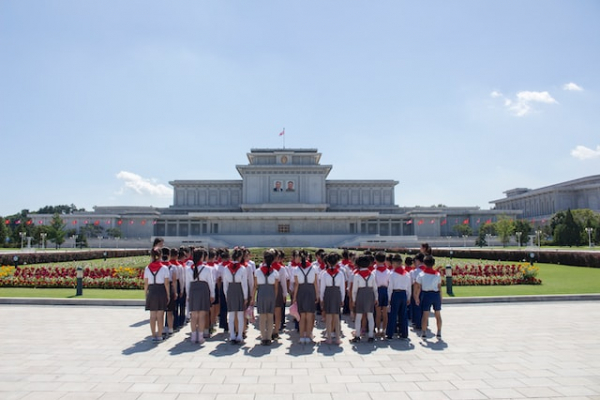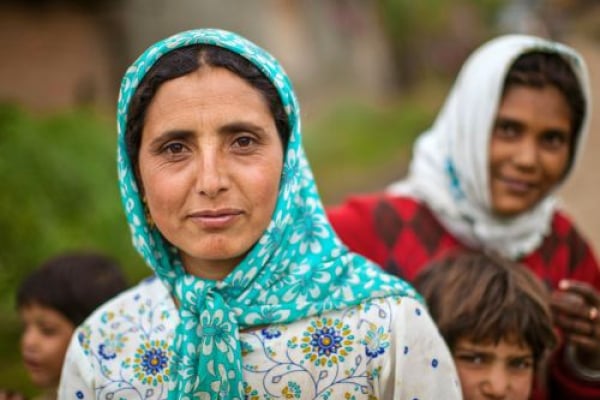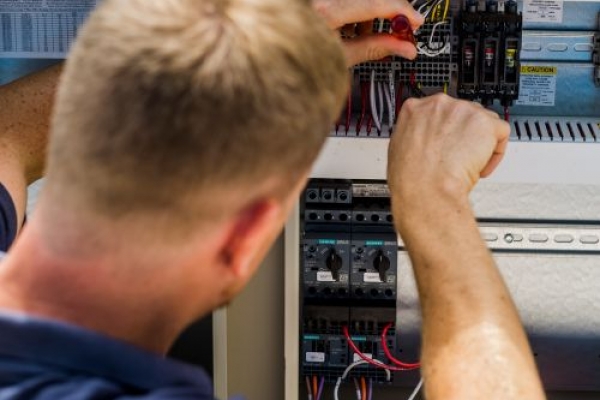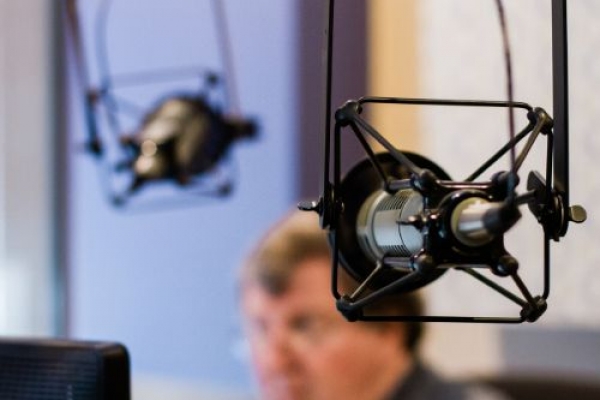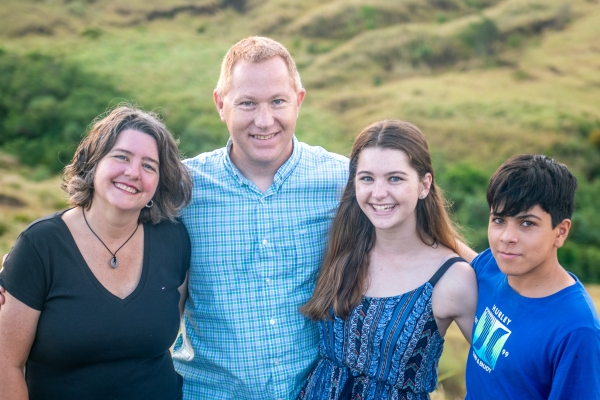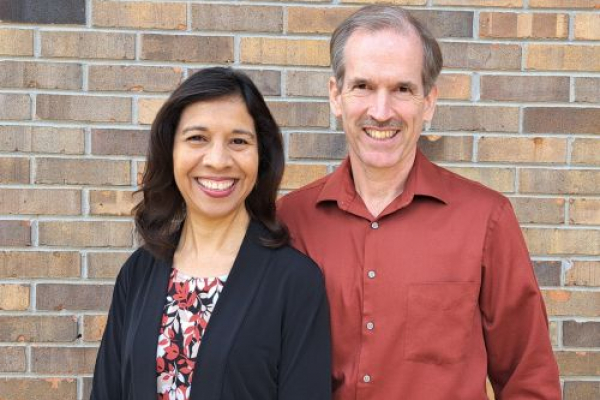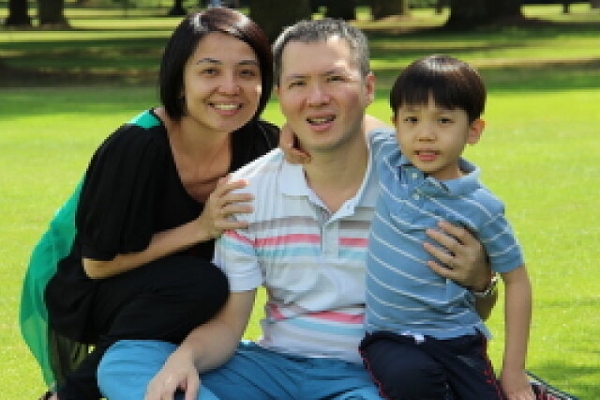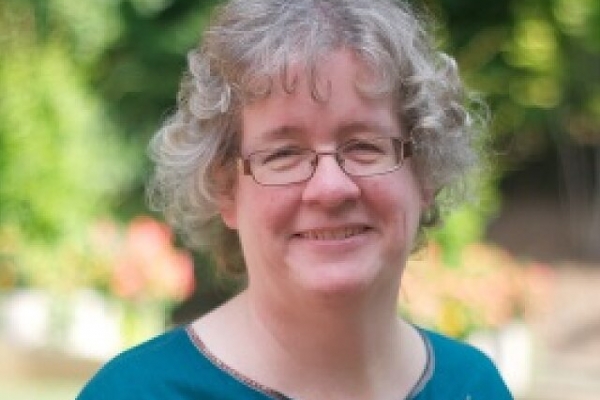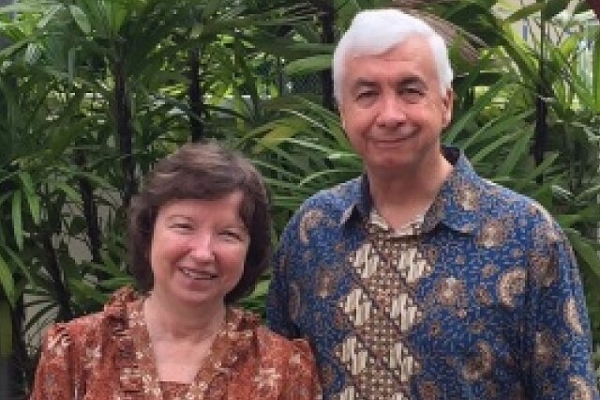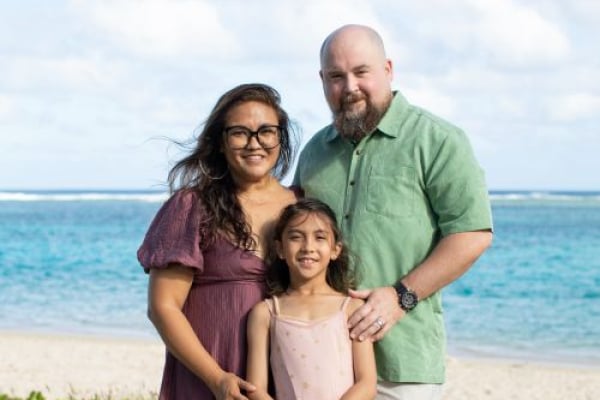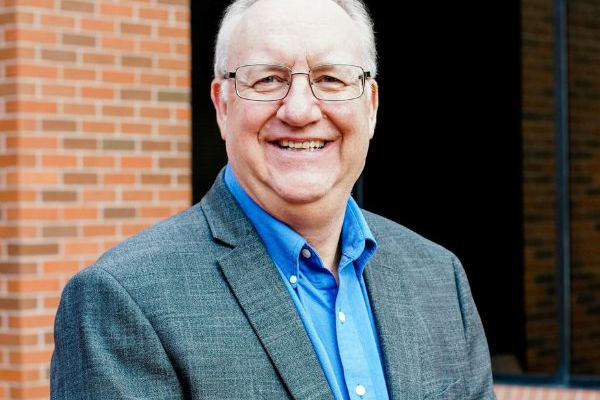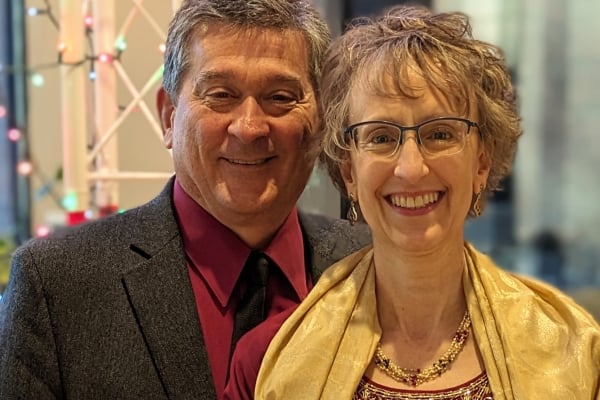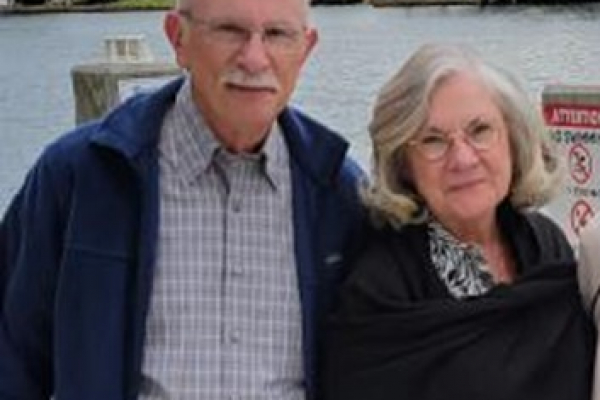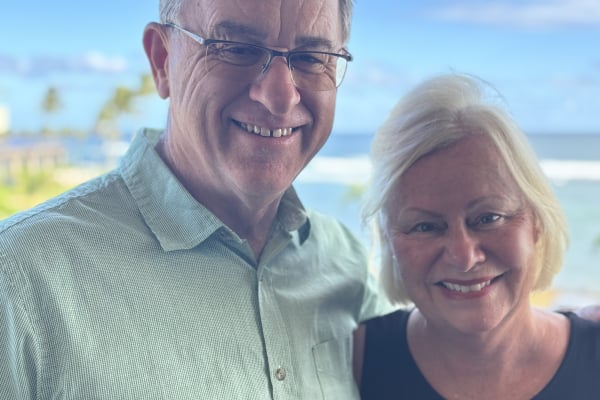
Transition for TWR’s Guam Station
[Estimated reading time: 3 minutes]
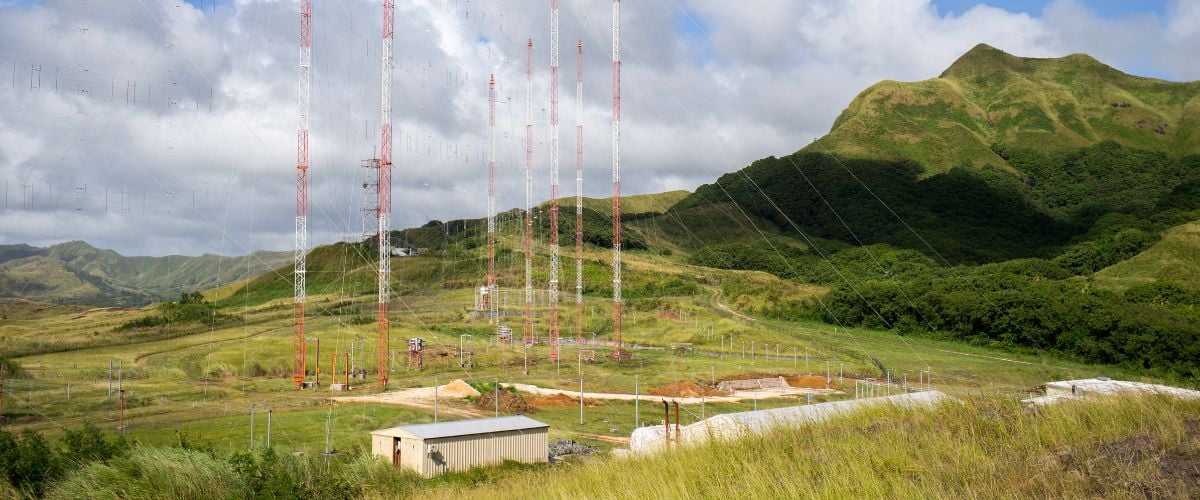
After nearly five decades, TWR has made the decision to wind down operations and end broadcasts from our transmission site on Guam.
For nearly 50 years, TWR has been proclaiming the gospel and teaching the Bible to the vast populations of Asia from our powerful shortwave station on Guam. On this side of eternity, it’s impossible to assess the impact KTWR has had on lives in China, North Korea, India, Myanmar, Vietnam and elsewhere across the region.
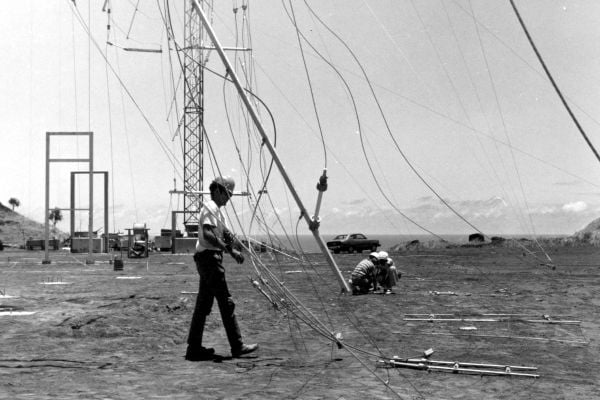 As valuable as the Guam station has been to TWR’s ministry, we have faced many challenges there in recent years, from the high cost of living on the island to the unsustainable workload for overstretched staff members to the continual toll on equipment. Another pressing concern involves our aging transmitters, which are becoming more susceptible to unforeseen, catastrophic failures. We don’t believe raising the funds to replace this costly equipment would be wise stewardship of resources needed in other areas of ministry.
As valuable as the Guam station has been to TWR’s ministry, we have faced many challenges there in recent years, from the high cost of living on the island to the unsustainable workload for overstretched staff members to the continual toll on equipment. Another pressing concern involves our aging transmitters, which are becoming more susceptible to unforeseen, catastrophic failures. We don’t believe raising the funds to replace this costly equipment would be wise stewardship of resources needed in other areas of ministry.
After months of intense prayer, study and discussion, TWR’s global leadership unanimously decided to wind down operations and end broadcasts on Guam by Oct. 31, 2025. It's important to emphasize two vital points regarding this tough but necessary course of action.
.jpg) The decision to end TWR’s shortwave broadcasting from Guam was made to maintain operational sustainability, not to change ministry objectives in any way.
The decision to end TWR’s shortwave broadcasting from Guam was made to maintain operational sustainability, not to change ministry objectives in any way.- TWR is not abandoning its listeners in Asia, many of whom depend on the biblical programming for evangelism, encouragement and discipling. We have initiated processes to transition 100% of shortwave programming to other outlets in the region, such as ministry friends Reach Beyond Australia and Far East Broadcasting Co. (FEBC) as well as commercial providers. We’ll also explore other platforms, including FM and AM broadcasting and digital streaming. Listeners will be advised about where they’ll be able to find our programs well before the transition takes place.
TWR’s faithful staff on Guam have worked heroically to keep the lights on, the antennas repaired and the broadcasts on the air amid stressful circumstances. We will do all we can to come alongside them as they execute the station shutdown and begin considering their next steps in God’s plan for their lives. These staff members will remain busy, as broadcasts will continue until the end of October, and the work of decommissioning the station will require many months beyond that.
.jpg) It may seem to some that TWR is taking a step back. But on the contrary, we are pivoting to make the best possible use of the resources God has given us. We remember that our mission is not ultimately about towers and transmitters; it’s about reaching the world for Christ by mass media so that lasting fruit is produced.
It may seem to some that TWR is taking a step back. But on the contrary, we are pivoting to make the best possible use of the resources God has given us. We remember that our mission is not ultimately about towers and transmitters; it’s about reaching the world for Christ by mass media so that lasting fruit is produced.
Would you pray for our transition in Guam in the months ahead and especially for the team members on Guam who have invested so much of themselves in this work?
We are certainly in a season of change at TWR, and change can be difficult. But we keep in mind an essential reality that will not change. In the words of Hebrews 13:8: “Jesus Christ is the same, yesterday, today and forever.”
FAQs about the Guam Station Transition
Q: What is different than when KTWR began?
KTWR began nearly 50 years ago. Lots of things are different! Other broadcasters now have powerful transmitters in the region. Other differences include the immense growth in military service members competing for housing on Guam and the relentless increases in Guam’s cost of living — especially for housing, fuel for vehicles and food.
Q: What will you do with the towers that I helped to pay for?
Your generosity enabled TWR to broadcast effectively for all these years. Without that infrastructure, we would have been forced to close KTWR earlier. Donations from you and other faithful supporters made it possible for TWR to get more years of usefulness out of towers that are many years beyond normal service life. Even though we’ve extended the life of the towers, we could not sustain the towers indefinitely. The only way to continue broadcasting from Guam would have been to replace all the towers within the next few years, and that would have been extremely cost-prohibitive.
Q: What will you do with the transmitters?
The transmitters will either be sold or transferred to another TWR location. Your gift(s) helped us stay on the air all this time. The HC 100 shortwave transmitter has been operating for 20+ years, and the two Thompson transmitters were purchased 15 years ago. We will seek to retain the HC 100 unit or salvage its major components for one of our other broadcast outlets. We will endeavor to sell the Thompson transmitters.
Q: What will you do with the generators, fuel tank etc.?
These assets will be sold and the funds applied to other TWR outlets or to pay for broadcasts in the region. If another TWR operating location can use any of the three KTWR generators we will transfer them. Otherwise, we will most likely sell them.
Q: What about the infrastructure (road, etc.)?
Your generosity enabled TWR to broadcast effectively for all these years. Without that infrastructure, we would not have been able to run the Guam transmitter station.
Q: Will you sell the property?
The property was leased from the Guam government in 1976. It will be returned to the government.
Q: Why couldn’t you find workers to continue the ministry?
The cost-of-living pressure in Guam, largely due to military buildup on the island, drove the missionary support requirements to unreachable levels – sometimes as much as US$20,000/month for some families. Guam has become one of the most expensive operating locations in Asia and Oceania. Missionary families have increasingly struggled to find affordable housing and Christian education for their children. They’ve also reported the need to make huge sacrifices in buying groceries and fuel for their vehicles to get around the island. During the past few years, when prospective missionary candidates assembled draft budgets for moving to and living on Guam, they consistently discovered that the cost was untenable (e.g., requiring 2-4 years of support-raising; and needing to stay on furlough longer than normal to raise extra support to overcome continuing increases in the Guam cost of living).
Q: Is shortwave dead?
Absolutely not. The broadcasts will continue airing on other shortwave outlets in the region. TWR also currently uses shortwave effectively in Africa from our Eswatini broadcast station.
Q: Will you tell the listeners what’s happening?
If there are frequency or time changes, listeners will be told where and when the programs will be found on the dial.
Q: Will there be a gap between Oct. 31 when KTWR ends and programs begin elsewhere?
No. The broadcasts will be continuous; only frequencies and times could change. If any frequencies or time changes occur, listeners will be notified over the airwaves.
Q: Why use Reach Beyond in Australia, which is much farther from China than Guam (6,318 km vs 4,037 km)?
Reach Beyond is only one outlet that we will be using for the programming. In all cases, we will put a strong signal into our audience area that is as good as the signal from Guam. To clarify, Reach Beyond Australia is primarily being engaged to reach audiences that they have the ability to engage with good-quality reception (for example: listeners in Indonesia and other countries in Southeast Asia). TWR is coordinating with several other shortwave broadcast service providers who can provide good quality reception for Chinese audiences.
Q: What will happen to the staff on Guam?
The missionary staff (currently one missionary) on Guam will remain until June 2026, when the land lease is up. Prior to that time, she will have chosen to be re-patriated to the United States or to another overseas field area with TWR. The mission will retain one hired staff member on Guam and release the other staff. The member who remains on Guam (Nate) is planning to join the Asia IT team, and he plans to raise support to serve as a missionary.
Q: First it was shutting down KTWG, now KTWR. What is next in TWR?
TWR is in a season of change. Dr. Paul Freed, our founder, encouraged us to continuously evaluate our methods so that the audience is reached effectively. In the past 50 years, many different media methods have been developed. Our focus is the message, and TWR will use the most effective platforms available to reach the audience.
TWR’s ministry to Guam listeners via KTWG ended over 20 years ago. At that time, other Christian radio stations began operating on Guam. This enabled TWR to shift its focus to audiences that could only be reached via shortwave in Asia. We are not abandoning any of the audiences that are currently serviced by KTWR’s broadcasts. Instead, we are moving the broadcasts to other outlets.
Q: Was new TWR President Andy Schick involved in this decision?
No, but Andy is supportive of the decision. He was informed prior to the decision about the challenges on Guam. The studies leading up to this decision began last fall, long before the search committee even met Andy.
Q: Will the broadcasts from the FEBC/Reach Beyond identify the programs as TWR content and direct listeners to TWR for follow-up / connections to churches?
Yes, all TWR content will be clearly identified as such.
Images: (top, banner) TWR's transmitter site on the island of Guam, which has played a key role in broadcasts to Asia for nearly fifty years, (top, right) TWR staff in the antenna field in the early days of the Guam site in 1981, (middle, left) Members of TWR staff perform guy wire repair and maintenance following destruction to the Guam site by Typhoon Mawar in 2023, (bottom, left) Jen Montour (left) and Eli Sabin (right) help pour cement on the Guam site in 2013.





